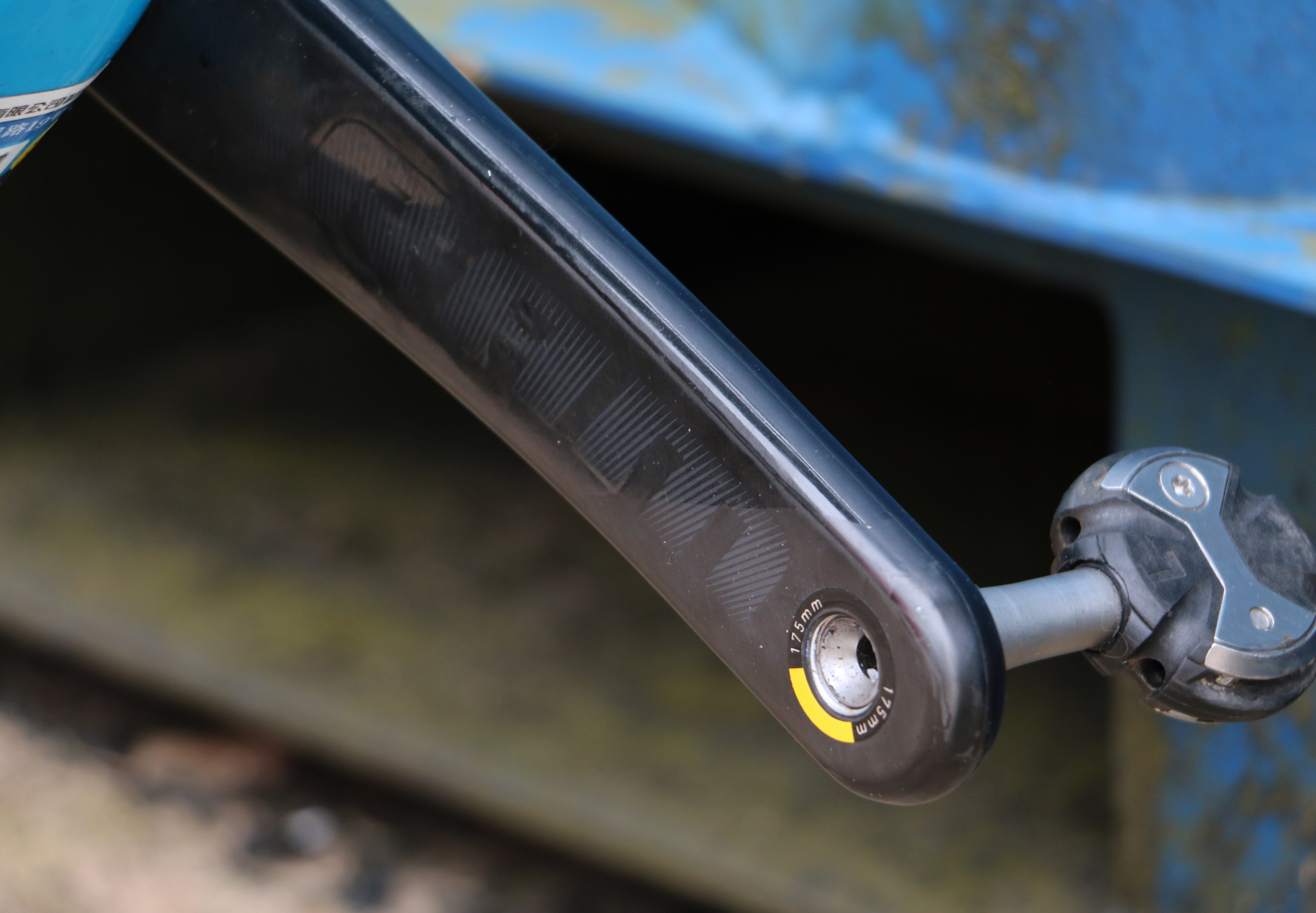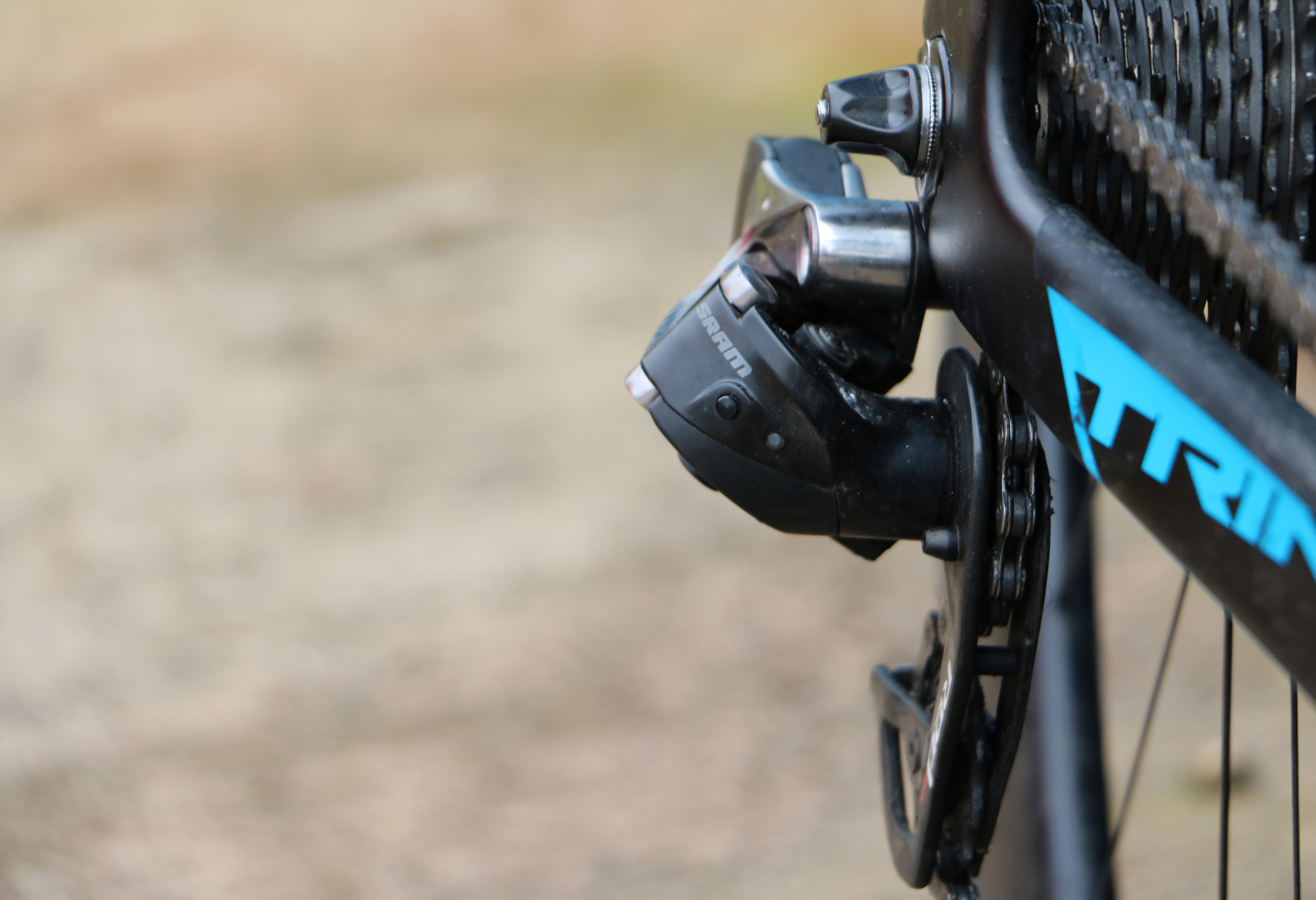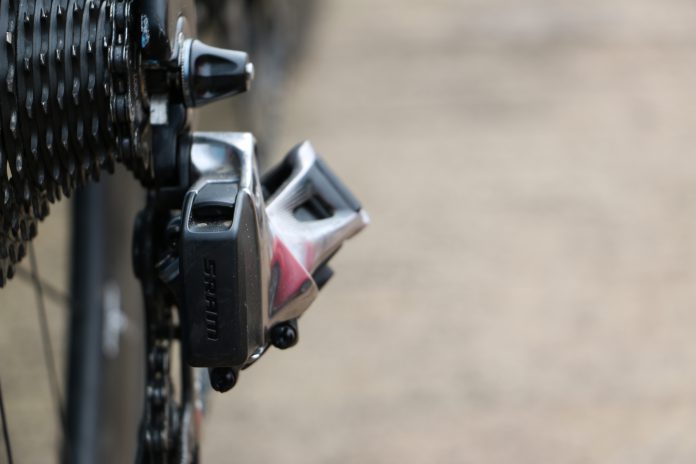The SRAM Red eTap has been out for a while now, and it’s redefining the game. No wires, why would it need to behave in the same way the Shimano Dura Ace does? If you’re currently facing the tricky decision of which to fit to your new bike, lucky you! Some of us can only dream of that kind of flexibility.

SRAM were definitely late with this group set, but they’ve definitely made up for the lost time by shaking up the rules. The levers can be programmed to shift any way you want with the double tap changing the front rings. Whereas the Di2 battery is hidden in the stem the SRAM Red eTap batteries are in both shifters and derailleurs.
 If you’re building a fully custom bike yourself and you’re more of a simple mechanic, Sram Red eTap is definitely the method of choice. The easiest groups on the market, you literally just bolt it in place and pair up the parts. It can be done quicker than you can make a cup of coffee! Though the SRAM red eTap is now the weapon of choice for bikes such as the Giant Trinity.
If you’re building a fully custom bike yourself and you’re more of a simple mechanic, Sram Red eTap is definitely the method of choice. The easiest groups on the market, you literally just bolt it in place and pair up the parts. It can be done quicker than you can make a cup of coffee! Though the SRAM red eTap is now the weapon of choice for bikes such as the Giant Trinity.
 On TT bikes you can fit the double set of shifters, but on road bikes the shifters are tucked into the brakes. Holding down on the shifter will quickly flick the chain up or down the cassette with a simultaneous push of each shifter to change the front ring. Sounds simple enough! And relatively it only takes a ride or two to get used it, even if you’ve ridden a ‘normal’ set up for years. This set up is much easier than the Shimano counterpart in winter, when you can accidentally knock the wrong one.
On TT bikes you can fit the double set of shifters, but on road bikes the shifters are tucked into the brakes. Holding down on the shifter will quickly flick the chain up or down the cassette with a simultaneous push of each shifter to change the front ring. Sounds simple enough! And relatively it only takes a ride or two to get used it, even if you’ve ridden a ‘normal’ set up for years. This set up is much easier than the Shimano counterpart in winter, when you can accidentally knock the wrong one.
The SRAM Red eTap is much quieter than the shimano counter part, there’s no buzzing or whirring as it flicks through the gears.

The derailleurs’ rechargeable batteries offer power for over 1,000km (625 miles) of typical riding while the widely available CR2032 button cell batteries in the shifters need changing on average about once every two years, based on a 15 hour week average, according to SRAM. It’s easy to measure the amount of juice left in the battery with LED lights, and if you run out you can always just swap the batteries over. Staying in single gear on the front for whatever duration you have left.
 The Sram Red eTap are very responsive and will change well at any time, even under load. Although the gears don’t have the same realignment features of the shimano counterpart, so if you don’t keep them well maintained they don’t always go straight into the next gear. Although indexing adjustments on the go are easy with eTap. Each paddle have a tiny function button the back, if you press this and at the same time move the paid the rear mech will adjust.
The Sram Red eTap are very responsive and will change well at any time, even under load. Although the gears don’t have the same realignment features of the shimano counterpart, so if you don’t keep them well maintained they don’t always go straight into the next gear. Although indexing adjustments on the go are easy with eTap. Each paddle have a tiny function button the back, if you press this and at the same time move the paid the rear mech will adjust.
We tried everything we could to unhinge the group set, crossing the chain, trying to change under excessive force, generally terrible riding. But nothing we could do phased the SRAM Red eTap, it consistently changed with a crisp and effortless quality. Out of the saddle looking for an extra few clicks, or smashing up a hill when you realise you’re well out of gear, the shifters will help you out.

Although we really don’t think that there is too much difference between the two. A complete SRAM Red groupset with eTap shifting will set you back a little over £1,000.
Split down to:
- Shifter: 260g / £140 for a set
- Front mech: 187g (with battery) / £265
- Rear mech: 239g (with battery) / £440
- Battery: 24g
- Blips: 16g per pair / £140 for four
- Charger pack £50
- USB firmware upgrade stick £35
Although list price for a Shimano Dura-Ace Di2 groupset is £1200, while Shimano Ultegra Di2 is £900. If you’re spending that amount of money anyway, it’s just going to come down to personal preference and which feels easier for you to change.








